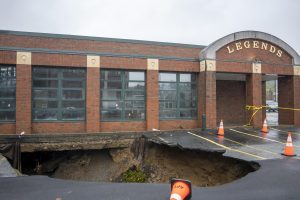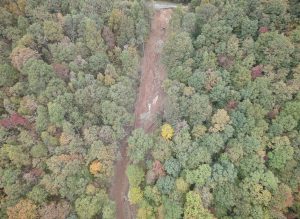Boone experiences warm start to fall season
October 2, 2019
On Sept. 11, temperatures in Boone reached 85 degrees, breaking the previous record of 84 degrees in 1931, according to Ray’s Weather Center.
David Still, meteorologist and director of business development at Ray’s Weather Center, said on Sept. 12, the weather was 85 degrees, one degree shy of beating that day’s record.
Still said the hottest weather so far this month has occurred from Sept. 9-12, and on Sept. 16 and 17. On each of those days, the highs either tied with previous records or came within five or fewer degrees of them.
“We’ve only set a couple records this month,” Still said. “While it is unseasonably warm, and we’ve been in record territory, we haven’t set a lot of new records.”
In addition to the hot weather, it has also been unseasonably dry, as Watauga County is in the midst of a “moderate drought,” according to the United States Drought Monitor.
Still said there has not been widespread rainfall in five weeks, as of Sept. 27.
“There’s a ridge of high pressure over the East Coast and a trough on the West Coast. The amplification is a warm, dry pattern for us unless we get the remnants of a tropical storm, which we have not,” Still said.
Still said he predicts Boone will have warm weather throughout the month of October as well due to the steady pattern this month.
“It’s a feedback mechanism; the ground is dry, the vegetation is dry, so we’re not getting any moisture through evapotranspiration,” Still said.
Evapotranspiration is the process of water being transferred from the ground up to the atmosphere, through both evaporation from soil and transpiration from plants.
Still said he doesn’t expect this to become a regular weather pattern, as weather ebbs and flows, and said he doesn’t believe that this weather is a part of global climate change, because the hot and dry spell has only lasted for about five weeks.
William Armstrong, assistant professor in the Department of Geological and Environmental Sciences, said this weather does not seem to be a part of climate change, as there are no long term changes of increasing hot weather.
Armstrong said the southern Appalachian area is not experiencing climate warming as fast as many other parts of the United States, as the temperature is constantly varying.
“There’s a wide range (of temperatures) but you don’t see the upward trend where it’s getting hotter over time,” Armstrong said.
Armstrong said based on data from various stations, there does not appear to be a strong warming trend, and Boone should not expect to see many more hot weeks like these most recent ones.
Using data from a chart that Armstrong created showing weekly average daily maximum temperatures for Boone during the week of September 20-26, an upward trend in temperature is seen after 1990, however, if all data gathered from 1929 and forward is used, that trend disappears.
“That’s where you start cherry-picking and you can get the numbers to say anything you want,” Armstrong said. “Generally, the best course is to use all the data you have.
While unusual, Armstrong said he doesn’t believe the recent dry weather is of any concern.
Armstrong said this recent weather is one standard deviation above the average in terms of temperature, meaning it is hotter than average, but not a strong anomaly.
“There’s more to climate change than just warming temperatures, and so more variable temperatures is definitely something you would expect in a warming world,” Armstrong said. “The extremes become more extreme.”










